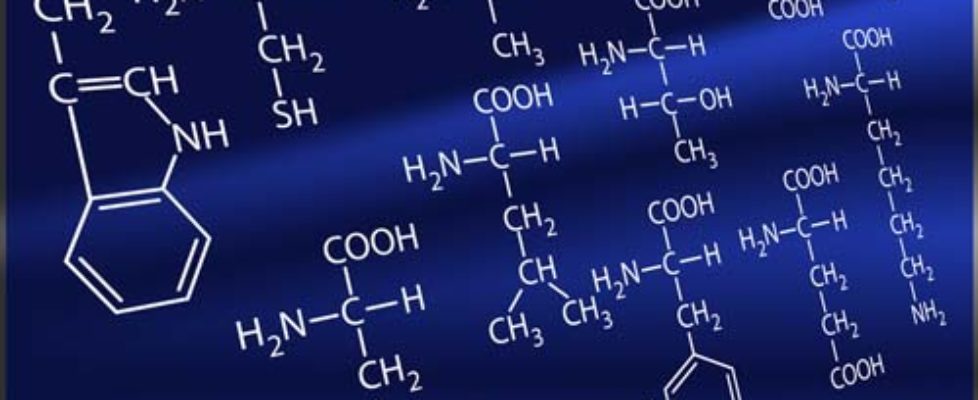

Functional Medicine Laboratory Tests for Environmental Toxicity Assessment
These five tests are fundamental in evaluating for various environmental toxin exposures, e.g. chemical, heavy metal, mold. The five tests are: Organic Acids Test (OAT), Toxic Non-Metal Chemical Profile (aka. GPL-TOX), Glyphosate Profile, GPL-MycoTOX Profile (aka. mold toxins) and Hair Metals (aka., Toxic & Essential Elements, Hair).
These tests all come from Great Plains Laboratory (GPL) and are available for ordering from Lab Tests Plus. Each test ordered through LTP comes with a detailed written review of findings of the relevant test markers and ‘action step’ suggestions. Ideally, all five tests should be done, but listed below are some additional considerations for each test if you are desiring to focus on certain exposures.
Organic Acids Test (OAT)
The OAT is a comprehensive assessment of various toxins linked to digestive yeast and bacteria toxins, digestive mold overgrowth, oxalate and various biochemical and mitochondrial imbalances. The OAT is a foundational test to have done and should not be skipped over for other testing. Other testing can be done, e.g. GPL-TOX, but in my opinion the OAT should always be done in combination with other tests.
Toxic Non-Metal Chemical Profile (aka., GPL-TOX Profile)
Toxic chemicals are significant factors in many chronic health conditions. Everything from gasoline additives, herbicides and pesticides can find their way into our water and food supply.
Many of these chemicals are problematic increasing the potential for various conditions such as cardiovascular disease, brain and nervous system disorders and even cancer. The OAT has certain chemical markers that are suggestive of chemical exposure, but the only way to know for sure which chemicals you are being exposed to is through testing. The GPL-TOX Profile is the test that should be done to identify various environmental chemicals.
Glyphosate Profile
Glyphosate is a chemical found in a popular herbicide used throughout the world. It is heavily used in soy and corn crops but is often used for other farming purposes too. There is growing evidence regarding the toxicity of glyphosate and the negative impact on health. The Glyphosate Profile from Great Plains Laboratory is a nice complement test to do along with the GPL-TOX Profile.
Glyphosate is known to alter the normal bacteria in our digestive system which increases the potential for opportunistic yeast and bacterial imbalances. Many times, high glyphosate is seen along with elevated clostridia bacteria markers, such as HPHPA and 4-Cresol, which are detected on the Organic Acids Test (OAT).
GPL-MycoTOX Profile
Mold toxins, called mycotoxins, are some of the most toxic compounds produced in the natural world. They can cause severe tissue damage within the body leading to kidney, liver, immune and nervous system diseases, as well as causing cancer.
Mycotoxins can find their way into various foods such as grains, fruit, meats and dairy and are commonly acquired from mold growth from water damaged building material. The Organic Acids Test (OAT) provides a few markers that indicate an overgrowth of mold in the digestive system, but it doesn’t identify which mycotoxins are present. The only way to do this is through the GPL-MycoTOX profile.
If you have concerns about mold exposure, the GPL-MycoTOX Profile should be done in combination with the OAT.
Hair Metals (aka., Toxic & Essential Elements, Hair)
Heavy metals such as Arsenic, Lead and Mercury can be acquired from various sources, e.g. grains, chicken, fish, water, contaminated soil and lead to wide variety of health disorders. For example, Lead exposure is a cause of brain and nervous system damage and is associated with various mental health conditions, including attention deficit hyperactivity disorder (ADHD) and behavioral problems in children.
A hair analysis is a non-invasive test to assess for heavy metal exposure. It is easy to do for both adults and children and provides information regarding past exposure to heavy metals. It also provides a useful way of measuring for certain mineral imbalances such as lithium, selenium and zinc. It is recommended to do the Organic Acids Test too along with Hair Metals testing.
Recap
Ideally, all five tests should be done for the most comprehensive assessment. However, if you are looking to combine just certain tests for specific purposes the following combinations are suggested.
OAT
OAT + GPL-TOX
OAT + GPL-TOX + Glyphosate
OAT + GPL-MycoTOX
OAT + Hair Metals
OAT + Hair Metals + GPL-TOX

SIBO Testing & Other Essential Lab Testing
SIBO (Small Intestinal Bacterial Overgrowth) is a condition in which abnormally large numbers of bacteria – the types that are normally found in the large intestine – are present in the small intestine. When not functioning properly, the migrating motor complex (MMC) fails to effectively sweep intestinal contents into the colon during periods of fasting. Once in the small intestine, these bacteria proliferate and feed off carbohydrates from food, creating fermentation gases, specifically methane and hydrogen. SIBO breath testing measures these gases.
SIBO can be a cause of many health problems, including diarrhea, abdominal pain, and protein/fat malabsorption. In recent years, there has been renewed interest in SIBO since it has now been implicated in the pathophysiology of certain diseases previously not classically associated with overgrowth. The World Journal of Gastroenterology claims a definitive association between irritable bowel syndrome (IBS) and SIBO, suggesting that SIBO be excluded before diagnosing a patient with IBS.
Common conditions associated with SIBO:
Nausea
Flatulence
Diarrhea
Constipation Malnutrition
Irritable Bowel Syndrome (IBS)
Leaky Gut Syndrome
Chronic Fatigue Syndrome
Acid Reflux
Rosacea
Fibromyalgia
GERD

Amino Acids
Amino acids are the building blocks for proteins, and proteins play a vital role in almost all biological activity in the human body. In fact, approximately 25% of our body is made up of protein. Our cells require a variety of nutrients to maintain their function, and we specifically need sugar, fat and protein to produce the energy currency that runs our body. Amino acids make up a large percentage of our cells.
Amino Acids – What Specific Functions Do They Participate In?
Amino acids amongst other things play a key role in energy metabolism within our cells. Without proper amino acid balance our cells ability to produce the energy currency chemical called ATP is significantly reduced. Without ATP production we run a deficit of cellular energy which compromises every organ system in our body including the brain and nervous system, heart and cardiovascular system, the digestive and musculoskeletal system, and immunity. Here is a short list of other functions of amino acids:
Responsible for wound healing and repair
Help remove waste material from cells
Needed for proper growth and maintenance of skin, hair, and nails
Important for muscle energy and repair
Amino Acids – Essential Amino Acids
Essential amino acids are those amino acids we must obtain from our diet. Our body doesn’t have the ability to produce these amino acids so we are dependent on food for a constant supply. These essential amino acids play a vital role in cellular metabolism and body function. Here is the list of essential amino acids:
- Histidine
- Isoleucine
- Leucine
- Lysine
- Methionine
- Phenylalanine
- Threonine
- Tryptophan
- Valine
A few amino acids on this list are noteworthy. Methionine is an amino acid that is central to a biochemical system called Methylation. Methylation is critical for higher cognitive function and is linked to language processing, attention, focusing, awareness, and memory. Without adequate methionine, methylation chemistry is significantly altered.
Another amino acid on the essential amino acid list is Tryptophan. Tryptophan is critically important for serotonin production. Serotonin is a neurotransmitter in the brain which is linked to mood, awareness, happiness, and fine and gross motor skills. Deficits in tryptophan can lead to deficits in serotonin which leads to depression.
Amino Acids – Non-Essential Amino Acids
Non-essential amino acids are those that our body can manufacture. They are still important, and a healthy diet is critical because vitamin and minerals from our food are what help amino acids and proteins function in unison to support overall cellular metabolism.
Here is a list of non-essential amino acids:
- Alanine
- Arginine
- Aspartic acid
- Cysteine
- Glutamic acid
- Glutamine
- Glycine
- Proline
A few amino acids are noteworthy on this list as well. Cysteine and glutamic acid are critically important for the formation of a powerful antioxidant in the body called glutathione. Glutathione is our cells powerhouse antioxidant and helps protect us against toxins. When glutathione runs low there is increase chance for cell damage and disease.
Amino Acids – Benefits of Testing
Testing for amino acids is important. This can be done through blood or urine sampling and provides measurement of amino acid balance or imbalances which helps in determining whether the diet is adequate or deficient. Sometimes amino acid supplements need to be implemented to bring amino acids into balance. Also, the amino acid test such as the Urine Amino Acids gives an idea of specific mineral and vitamin need to support overall amino acid metabolism.
Recommended: Foods With Amino Acids

Yeast Problems & Symptoms
Yeast problems and symptoms are a common complaint for women who have recurrent vaginal yeast infections. It is also a common complaint from parents who see persistent diaper rash turn into a red and blotchy irritation around their infant’s genital area. However, yeast problems and symptoms extend far beyond the ordinary vaginal infection and fungal skin infections. Millions of people suffer from a myriad of yeast problems and symptoms significantly affect their quality of life. Many of these yeast problems and symptoms cause persistent digestive problems, chronic headaches and body aches, fatigue, and poor mental performance. Before we can describe the myriad of yeast problems and symptoms let’s first describe what yeast really is and many of the symptoms it presents with.
Yeast Problems and Symptoms – A Common Form of Yeast
Yeast within the human body can take on many forms, but the most well-known is called candida, or more specifically Candida albicans. There are many different types of candida, but the albicans variety is most common. This particular yeast can be found on the skin, in the vagina, the mouth, and throughout the entire digestive tract. When our immune system is functioning properly this yeast is kept under control. However, when our body becomes stressed from a poor diet, excess sugar, chronic illness, and overuse of antibiotics candida can proliferate leading to a host of symptoms. Listed below are some of the more common issues experienced by people with yeast problems and symptoms:
- Anxiety
- Bad Breath
- Bladder Infections
- Depression
- Diarrhea
- Dizziness
- Dry Mouth
- Dry skin and itching
- Fatigue
- Food sensitivities
- Gas and bloating
- Headaches
- Heartburn
- Indigestion
- Insomnia
- Irritability
- Low libido
- Mental fog
- Memory problems
- Muscle aches
- Sugar cravings
These yeast problems and symptoms are not well recognized by traditional medicine. Most traditional medicine doctors only think of yeast problems and symptoms when the more obvious issues occur such as oral thrush (candida in mouth), and the before mentioned skin and vaginal infections. However, the yeast problems and symptoms listed above are commonly found in people dealing with chronic candida, and often resolve when they are placed on anti-yeast medication.
Yeast Problems and Symptoms – Getting the Appropriate Tests Done
Obtaining proper diagnostic testing is important for anyone suffering with yeast problems and symptoms. The Organic Acids Test (OAT) from Great Plains Laboratory is specific for detecting candida toxins and other metabolic imbalances. Also, the Comprehensive Food IgG Sensitivity (Food IgG) test from Great Plains Laboratory, and the Gastrointestinal Pathogen Screen (#401-H) from BioHealth Laboratory are both helpful too to analyze for food sensitivities, parasitic and bacterial infections, all of which make yeast problems and symptoms worse.
Recommended: Yeast Infections

Foods With Amino Acids
There are many foods with amino acids – some higher in content than others. Amino acids are the building blocks of proteins, and proteins play a vital role in cellular function within every organ system of the body such as the brain and nervous system, heart and cardiovascular system, immune function, musculoskeletal system, etc. There are two primary categories of amino acids – essential and non-essential. The essential amino acids we must obtain from food and the non-essential are amino acids that our own body can produce. Listed below are the main amino acids found in the essential and non-essential categories:
Foods With Amino Acids – Essential Amino Acids List
• Histidine
• Isoleucine
• Leucine
• Lysine
• Methionine
• Phenylalanine
• Threonine
• Tryptophan
• Valine
Foods With Amino Acids – Non-Essential Amino Acids List
• Alanine
• Arginine
• Aspartic acid
• Cysteine
• Glutamic acid
• Glutamine
• Glycine
• Proline
Amino acids in general make up approximately 75% of human body and are vital for every body function. For example, cysteine, methionine, and glycine are necessary for the methylation cycle. Methylation is a system in the body that supports brain function and detoxification. In fact, cysteine, glycine, and glutamic acid (all non-essential amino acids) come together to form glutathione, the most powerful antioxidant in our cells. Glutathione is necessary to protect us c against toxins and support detoxification of poisons.
The foods generally highest in all around amino acids are animal proteins such as meats, eggs, and dairy. However, vegetables and grains have can have amino acids too. Listed here is the top 10 list of vegetarian food choices that contain a high amount of amino acids:
• Quinoa
• Buckwheat
• Hempseed
• Chia
• Soy
• Rice and Beans
• Ezekiel Bread
• Hummus and Pita
• Grain, oats, and nuts
• Peanut butter
These foods are considered to be complete proteins providing a wide variety of amino acids in various ratios.
Other foods such as those listed here provide a variety of amino acids:
Pumpkin, cabbage, spinach, sunflower seeds, avocadoes, figs, raisins, dates, peanuts, almonds, mushroom…
For a complete list of foods with amino acids please see the following link, here.
Recommended: Benefits of Amino Acids Tests

Candida Symptoms
Candida (particularly Candida albicans) is a common yeast organism that resides in the digestive system, and when found in abundant amounts can give rise to a number of candida symptoms. When it is kept in low levels candida is generally not a problem. Unfortunately, candida can be opportunistic and become problematic by flourishing within its colonies and invading the mucosal lining of the digestive system. There are many different types of candida, but most have the ability to become invasive when the opportunity arises. For many people the presence of candida is not recognized as anything serious. They have enough healthy bacteria (natural flora) in the digestive system that keeps the candida in check. However, for others the existence of candida and the toxins it produces creates a myriad of symptoms that is quite bothersome. Listed below are some of the more common issues experienced by people with candida symptoms.
Candida Symptoms – Common Issues Recognized By Traditional Medicine
Traditional medicine recognizes certain problems that can come about from candida infections. These candida symptoms are usually obvious and easily recognized by most medical professionals. An oral overgrowth of candida called ‘Thrush’ often occurs in infants and young child who still have developing immune systems. There can be a whitish coating and cottage cheese like material in the mouth if the candida overgrowth is severe enough. Often children will complain of mouth discomfort or avoid food because of the irritation from the candida.
Another outward manifestation of candida is skin infections that appear red and blotchy. These usually occur around the groin or rectum and can be a manifestation of an overgrowth of candida. Most skin infections of candida can be treated successfully with topical antifungal medications.
Vaginal yeast infections are another problem associated with candida and the candida symptoms of these infections causes irritation, swelling, and pain around the vaginal area. Vaginal yeast infections affect millions of women every year and often link back to an imbalance of the natural flora in the vagina. Certain medications can be taken to help with vagina yeast infections.
Candida Symptoms – Common Issues Recognized By Many Integrative Medicine Practitioners
Candida symptoms can present with a wide range of “other” issues than just ‘thrush’, skin and vaginal infections. In fact, the list of complaints attributed to candida is extensive. Listed below is a short list of suspected “other” candida symptoms recognized by many integrative medicine practitioners:
• Allergies
• Anxiety
• Bad Breath
• Bladder Infections
• Constipation
• Depression
• Diarrhea
• Dizziness
• Dry Mouth
• Dry Skin & Itching
• Food Sensitivities
• Gas/Bloating
• Headaches
• Heartburn
• Hormonal Imbalance
• Indigestion
• Insomnia
• Irritability
• Infertility
• Joint Pain
• Low Blood Sugar
• Menstrual Problems
• Mental Fogginess
• Muscle Aches
• PMS Symptoms
• Poor memory
• Sugar cravings
• Water Retention
If you suffer from more than a few of these issues it is likely candida could be a problem. Even though not all of these are uniquely specific to candida (meaning there can be other causes too), the list above is often found highly represented in individuals with chronic candida problems.
Testing To Identify Certain Candida Symptoms and Problems
One of the best tests to perform to analyze for candida toxins and other metabolic disturbances is Great Plains Laboratory’s Organic Acids Test (OAT). Other tests to consider are the Comprehensive Food IgG Sensitivity (Food IgG) test from Great Plains Laboratory.
Recommended: Candida Causes

Amino Acids Testing Procedure
Amino acids are the building blocks of proteins, and the amino acids testing procedure for comes in different forms. There are many benefits to doing amino acid testing, and the information provided by amino acid tests can be useful for a wide variety of health complaints. All proteins in the body are essentially larger chains of peptides which come together through the various sequencing of amino acids. Without amino acids and the corresponding proteins our body’s ability to regulate cardiovascular, immune and neurological function would be greatly compromised. Therefore, following amino acids testing procedure is very important when evaluating amino acids.
Amino Acids Testing Procedure – Blood Testing
Amino acids can be tested through blood sampling. The blood test should be done fasting (not having eaten for at least 6 to 8 hours, but 4 hours is generally okay unless otherwise specified via the test kit instructions) to provide more accurate results. Blood amino acid testing provides a snapshot of amino acids in general blood circulation and an overall picture of essential and non-essential amino acids. Essential amino acids are those that we must obtain from our diet, and non-essential amino acids we can produce internally. This means our diet should be replete in essential amino acids to maintain healthy levels. One reason amino acids testing procedures calls for a fasting blood sampling is that various supplements (particularly if they contain amino acids) can cause the values on the test to appear artificially elevated.
Amino Acids Testing Procedure for Urine Testing
Amino acids can also be tested through urine sampling. The urine test is normally done as a 24-hour urine collection. The sampling of amino acids from a 24-hour urine collection provides detailed information about total body storage and circulation of amino acids. It also accounts for what amino acids are being obtained from your diet over a 24-hour period of time. The 24-hour urine amino acid test often is the best way to measure total amino acids. Unfortunately, obtaining a 24-hour urine test can be difficult, especially in children. Therefore, another amino acids testing procedure is to do an 8 hour urine collection through the night. This method will still provide useful information, as along as the diet the previous day wasn’t manipulated artificially with amino acid supplements or exceptionally high amino acid foods.
What to Avoid with Amino Acids Testing
The amino acids testing procedures call for some specific action to take place prior to and during the collection process. For blood testing having not eaten for a minimum of 4 hours is required (make sure to check the specific instructions for blood amino acid test you will have done). Blood is drawn from a vein in the arm (elbow region) or back of hand. In young children or infant a sharp tool called a lancet may be used to puncture the skin. The blood draw process normally takes less than a minute.
The amino acids testing procedure for urine collection also has some specific actions that need to take place prior to and during the collection process. A regular diet should be consumed during the 24-hour urine collection time frame. To get the best indication of diet with relation to amino acid supplements the avoidance of amino acid supplements should be avoided during this time frame. For an 8 hour urine collection this is best done by collecting a first morning urine after a night’s sleep. If it is necessary to get up in the middle of the night to urinate this urine should be collected too.
Summary of Amino Acids Testing Procedure
Amino acid testing is a useful diagnostic tool to assess overall amino acid deficiencies and imbalances. When doing amino acid testing make sure to always read and follow the specific instructions of your particular amino acid test kit, and follow the labs amino acids testing procedure to ensure the most accurate sampling of your particular amino acid status.
Recommended: Lab Tests

Constipation Problems
Constipation is most commonly defined as having less than 3 bowels movement per week. It normally is associated with difficulty passing stool and hard stools overall. There is pain while trying to pass stools, or a complete inability to have a bowel movement even after straining to do so. There are many causes for constipation, and it is an affliction that affects millions of people throughout the United States and around the world. For the vast majority of people constipation is a transient problem that resolves with changes in diet, improved hydration, or the incorporation of dietary fiber. For others constipation can be a sign of something more serious such as intestinal cancer, neurological disease, or intestinal obstruction from an infection. If constipation persists for many months, or is associated with other health complaints such as rectal bleeding, weight loss, increasing fatigue, and intense abdominal pain being evaluated by a trained medical professional is absolutely necessary.
However, there are many cases where constipation is a functional problem linking back to a food sensitivities, chronic bowel infection, or poor digestion overall from consuming unhealthy food or poor digestive enzyme production.
Constipation Problems – Food Sensitivities
Constipation problems can come about from eating food that your body is immune sensitive too. There can be almost anything that a person can develop a sensitivity too, but the following list of foods are quite common in food sensitivity tests:
• Wheat, gluten
• Dairy (cow) – including milk, cheese, yogurt, ice cream
• Corn
• Rice
• Soy (and soy products)
One of the best tests to do to see if food sensitivities are causing a problem is the Comprehensive Food IgG Test (finger prick). This easy to do test at home involves no blood draw, and only requires a small amount of blood via a non-painful finger prick procedure. The test analyzes for over 90 foods. It is an efficient way to assess for a wide range of food reactions.
Constipation Problems – Chronic Infections
Constipation problems can occur from long-standing infections in the digestive system. Bacteria, yeast, and parasites if left untreated can harbor in the digestive system leading to chronic irritation and constipation overtime. Not everyone with chronic constipation has infections, but a certain percentage of people do and analyzing the digestive system for pathogens can help uncover an important cause or contributing factor for constipation problems. The Comprehensive Digestive Stool Analysis (CDSA) helps to identify a myriad of normal and abnormal bowel bacteria, as well as yeast, parasites, and digestive markers which suggest inflammation and poor digestive enzyme production. The CDSA is a complete digestive stool analysis. The Gastrointestinal Pathogen Screen w/H. pylori – #401-H (from BioHealth Laboratory) is a more specific stool test for parasites and bacterial overgrowth.
Constipation Problems – Digestive Enzyme Production Issues
Constipation problems can also come about from faulty production of digestive enzymes. The stomach produces hydrochloric acid to help breakdown proteins in the stomach, and the pancreas produces a wide variety of enzymes need to breakdown protein, fats, and carbohydrates. Without adequate digestive enzyme production poor food assimilation occurs and this stress can lead to constipation for some people. Just like the discussion in the ‘chronic infection’ section the Comprehensive Digestive Stool Analysis (CDSA) is an excellent test to perform for constipation problems to assess all around digestive markers, including those for enzyme production.
Recommended: Lab Tests
